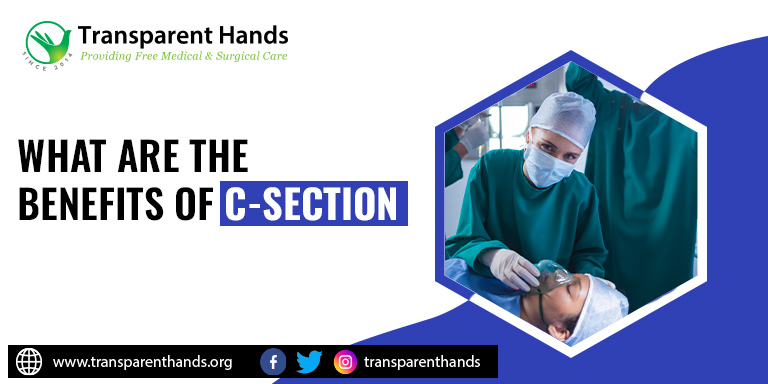What Are the Benefits of C-Section?

A C-Section, also known as a Cesarean Section delivery, is a surgical procedure used to deliver a baby through abdominal and uterine incisions. Typically, a woman and her obstetrician decide to perform a C-Section when vaginal delivery is unsafe for the mother or the baby. There are several factors that influence this decision, and those factors are the reasons why the mother and her physician decide whether to go for a C-Section or not. Among those factors and reasons are the benefits of C-Section that compel people to go for that procedure.
Some reasons why a woman might need a C-Section include:
- The infant’s size prevents it from passing through the birth canal.
- The infant is in an abnormal delivery position, such as breech or transverse.
- The mother has a medical condition, such as placenta previa or preeclampsia, that makes vaginal delivery unsafe.
- The mother has had a prior C-Section and is not suitable for vaginal birth after a C-Section (VBAC).
- After a considerable amount of time, the labor is not proceeding normally or effectively.
Noting that a C-Section is a major surgical procedure with risks such as infection, bleeding, and blood clots. Despite the fact that a C-section is a major surgical procedure that carries risks, it can be a lifesaving option for the mother and child in certain situations. The decision to have a C-Section should be based on medical necessity and the risks and benefits for the mother and baby. It’s crucial for women to discuss their delivery options with their obstetricians and understand their risks and benefits.
Potential Benefits of C-Section
1. A C-Section may be advised if vaginal delivery is likely to result in complications, such as the baby being in distress, the mother experiencing excessive bleeding, or the baby’s head being too large to fit through the birth canal.
2. When a C-Section is planned in advance, the mother and caregivers have more time to get ready for the birth.
3. Damage to the muscles of the pelvic floor, which can lead to incontinence or pelvic organ prolapse, is less likely to occur with a cesarean section than with a vaginal delivery. A C-Section can lessen the likelihood of injury in this way.
4. A perineal tear is a common complication of vaginal delivery that can be painful and require stitches. And one of the top benefits of C-Section is that perineal tears are less likely to occur after this procedure.
5. Babies can be shielded from certain infections if a C-Section is performed, such as when the mother has an active case of genital herpes.
6. Urinary incontinence, or the inability to control urination, is a common postpartum complication that can result from vaginal delivery. C-Sections may lower the risk of postpartum incontinence.
7. In some cases, a difficult or prolonged vaginal delivery can cause birth trauma, which can result in injuries like fractures or nerve damage. A C-Section decreases the likelihood of birth trauma.
8. Fetal distress is a medical emergency that occurs when the baby does not receive enough oxygen during labor. A C-Section can be used to deliver the baby quickly while reducing the risk of complications caused by fetal distress.
9. During delivery, certain infections, such as HIV, can be transmitted from mother to child. These infections are less likely to be transmitted vertically if a C-Section is performed.
10. With a C-Section, the obstetrician has greater control over the delivery process, which can be crucial in certain circumstances, such as when the baby is in an awkward position.
11. Vaginal delivery can increase the risk of fetal injury when the baby is in an abnormal position for delivery, such as breech or transverse.
12. Premature infants who are delivered vaginally are more likely to develop complications, such as respiratory distress syndrome.
13. Although a C-section is major surgery, it may provide some women with a more manageable recovery than a challenging vaginal delivery. Women with a history of difficult vaginal births may be at a higher risk of having different types of complications.
14. Women carrying multiples, such as twins or triplets, may face more complications during vaginal delivery. A C-section can improve outcomes for these pregnancies by reducing the risk of complications for both the mother and babies.
8 Ways to Improve Maternal Health
Conclusion
The choice to undergo a C-section should not be made lightly. Although the benefits of C-Section are significant to consider, it is important to remember that it is a major operation with potential risks and complications. Whether a woman gives birth vaginally or via C-section, the most important factor is that she and her child are healthy and safe. Modern medicine has made both delivery methods safer, and women have more options than ever.
Therefore, whether a woman is expecting her first or fifth child, she can rest assured that she will have access to the most advanced medical technology and the highest quality of care. In the end, what matters most is the safe delivery of a healthy baby to a happy, healthy mother.










Leave a Reply